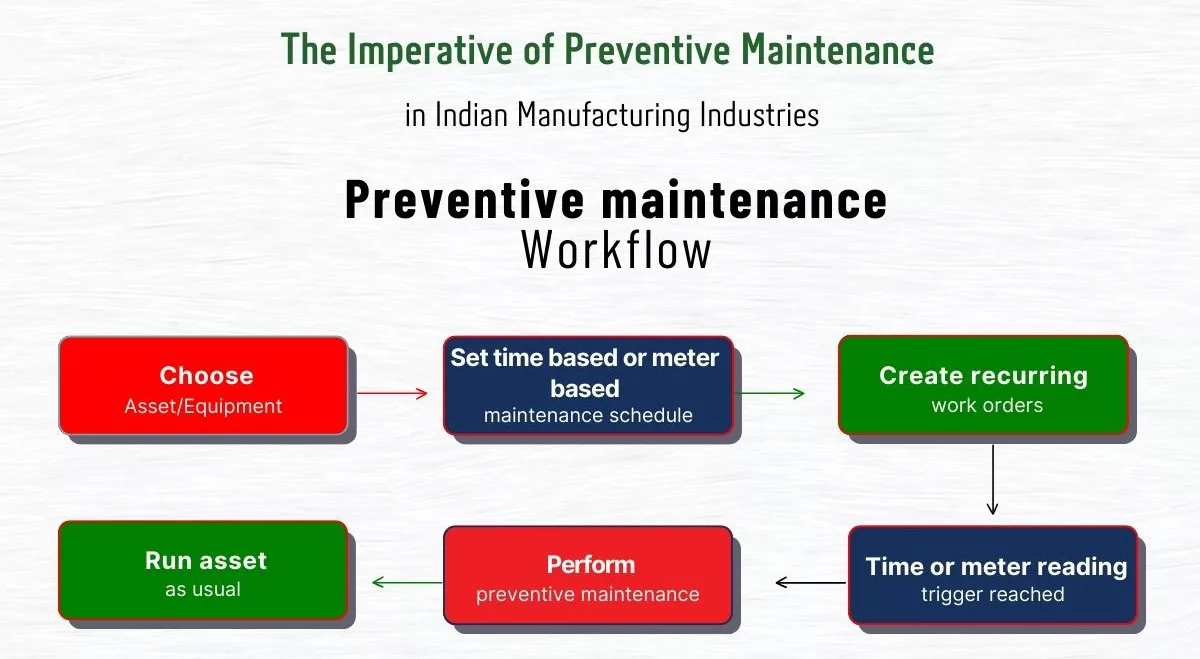In Indian manufacturing industries, productivity depends on greased machinery and perfect equipment upkeep.India’s industrial scene, marked by its varied sectors and rapid expansion, requires an adaptable maintenance strategy. Preventive maintenance guarantees the long-lasting of machinery and its maximum performance.In this article, we will discuss preventative care, its challenges, and its transformative impact on the Indian manufacturing sector.
Routine maintenance includes regular inspection, detection, and correction of potential failures in equipment before they cause downtime or terrible breakdowns. In reactive maintenance, repairs are conducted after machinery failure, but in preventive maintenance issues are identified and rectified before they appear.This approach lowers unexpected breakdowns, increases the lifespan of equipment, enhances safety, and improves the efficiency of machinery in the plant.
Indian manufacturers operate on small budgets, reluctant to invest money in preventive maintenance. However, the cost of downtime from sudden breakdowns can surpass the investment in preventative measures.If manufacturers prioritize preventive maintenance, they can make profits in the long run.
Industrialists must be aware of the extended benefits of preventive maintenance. Businesses need to analyze the potential gains in increased productivity, minimal downtime, and enhanced safety.
The lack of a skilled workforce trained in modern technologies creates impediments to the implementation of preventive maintenance. We need more experienced technicians for a smooth adoption of preventive maintenance strategies.
Shifting reactive maintenance to a proactive culture needs a significant change within organizations. If you want to successfully steer this shift, you have to convince stakeholders of the long-term benefits and encourage a new mindset within organizations.
Preventive maintenance restricts unplanned downtime, boosting overall manufacturing efficiency. By identifying issues early through regular inspections and repairs, machinery remains in good condition, allowing for optimal production output.
In these technological days, preventive maintenance not only restricts breakdowns but also extends the lifespan of equipment. It also maximizes the return on your valuable assets.
Regular maintenance might seems expensive for plant owners at the beginning, but it saves you money in the long run. It helps to prevent sudden breakdowns, reduces repair costs, and keeps production running smoothly, which is a smart investment.
Regular inspections and maintenance identify and sort out potential hazards. This improves the workplace and ensures continuity in operations.
Preventive maintenance has become a dominion in the Industry 4.0 landscape. Interconnected systems and data-driven insights, powered by predictive analytics and IoT sensors, allow for anticipating and resolving equipment issues before they escalate into major problems.
Success stories exhibit real-world results: increased productivity, minimized downtime, and enhanced profitability. By accepting proactive maintenance, companies are moving towards a more efficient and prosperous manufacturing sector.

